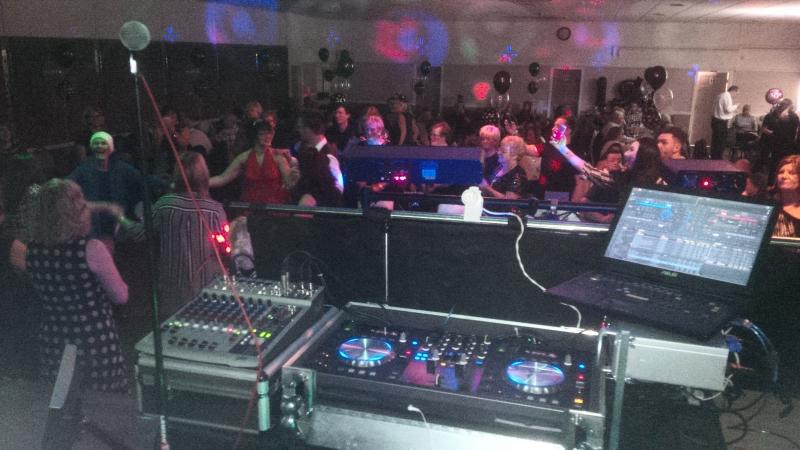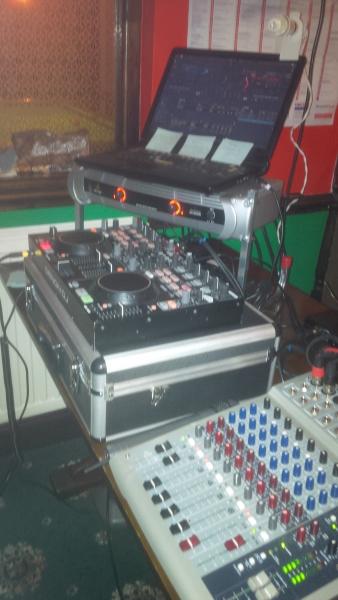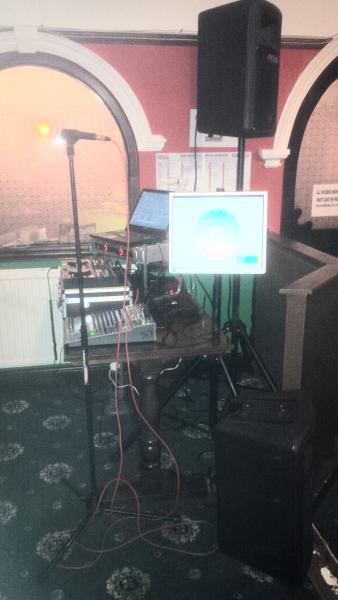Folks, you didn't say 'not to try this at home' .... I was just trying to test what you guys are saying... but, unfortunately, couldn't say who is right.


Posted Tue 26 Jan 16 @ 6:39 pm
vdjeddie wrote :
Folks, you didn't say 'not to try this at home' .... I was just trying to test what you guys are saying... but, unfortunately, couldn't say who is right.
blckjck wrote :
Heck, you can hook up a copper wire into your standard breaker, run it outside your house, stick it into the ground, and turn on the breaker. It will not trip the breaker. But, it still has to potential to electrocute you. DON'T TRY IT!
;)
Posted Tue 26 Jan 16 @ 7:14 pm
Ooops!... My bad, man ... 'missed that one! ....Oh well!


Posted Tue 26 Jan 16 @ 8:11 pm
vdjeddie wrote :
Ooops!... My bad, man ... 'missed that one! ....Oh well!
I enjoyed the little clip though
Posted Tue 26 Jan 16 @ 9:33 pm
What's the topic of this thread? Never mind.
Posted Wed 27 Jan 16 @ 9:03 pm
Adion is right about speaker cables offering a threat to human safety.
Beware.
Back to the other important topic.
Old fashioned.

Modern



The amplifier is at a funny angle because of the different height of the tables, and its legs lack of rubber feet. On a slippy surface the aluminium legs easily slide. I'll get some rubber feet this week.
..and modern, but shoe box size.


This helps get in, and out of a small venue quickly.
Yes, I have lots of speaker stands!
Note the speaker on the floor, and a monitor on its stand.
Class D appears to be the future.
I hope I've helped.
Beware.
Back to the other important topic.
Old fashioned.

Modern



The amplifier is at a funny angle because of the different height of the tables, and its legs lack of rubber feet. On a slippy surface the aluminium legs easily slide. I'll get some rubber feet this week.
..and modern, but shoe box size.


This helps get in, and out of a small venue quickly.
Yes, I have lots of speaker stands!
Note the speaker on the floor, and a monitor on its stand.
Class D appears to be the future.
I hope I've helped.
Posted Thu 28 Jan 16 @ 12:20 am
Posted Mon 08 Feb 16 @ 11:56 pm
Wow!
I've been aware of class D amps for a year, or two, but missed my chance to pick up a Peavey IPR1600 when they were almost giving them away. I Just could not believe they were any good since they weigh so little.
There is one aspect of the Inuke 3000 that I dislike which is the notched amplifier volume controls. What I mean by that is the volume is increased in small steps as oppose to being roughly linear. I won't explain why that's a little important, anyway it's not a deal breaker.
I do kinda wish I'd bought a Crown, or Peavey.. maybe just image, and perhaps superior X-over features.
I just didn't realize how valuable the weight reduction was, my class A/B amps are now rarely used.
I've been aware of class D amps for a year, or two, but missed my chance to pick up a Peavey IPR1600 when they were almost giving them away. I Just could not believe they were any good since they weigh so little.
There is one aspect of the Inuke 3000 that I dislike which is the notched amplifier volume controls. What I mean by that is the volume is increased in small steps as oppose to being roughly linear. I won't explain why that's a little important, anyway it's not a deal breaker.
I do kinda wish I'd bought a Crown, or Peavey.. maybe just image, and perhaps superior X-over features.
I just didn't realize how valuable the weight reduction was, my class A/B amps are now rarely used.
Posted Tue 09 Feb 16 @ 2:57 am
The biggest contributor to weight is the powersupply actually.
The class D amp will of course give lower weight because of a smaller heatsink but not as much as the PSU.
The iron transformer compared to a ferrite transformer as in switched mode power supply.
The class D amp will of course give lower weight because of a smaller heatsink but not as much as the PSU.
The iron transformer compared to a ferrite transformer as in switched mode power supply.
Posted Tue 09 Feb 16 @ 11:43 am
For no reason at all....
Let me say have a 500W sony Xplod on a 13.4V overkill voltage converter... on a junk subwoofer in a case build for 2x12" ... It's Pyramid 12" car sub on sony amp. (better Fs and deeper lows.)
Don't care how funny the two Monster Cable home theater subs my parents owned really cost.... This was the body shaker in the house.
But this was beast as hell. Like, Just good enough for my basement, outside it wasn't noticeable... but all over the house, especially in my production desk, the bass was despicable.
Just for real, even with no more music the fan on the 120V AC -> 13.4V DC (75+ amps?) unit would persist, due to class D design. So.. it's like underfiltered, dunno about the rest.
Power is not the deal however, not its storage and availability for thumps. Quality amplifiers of A/B are justified, at the lowest common denominator, their "balanced" tendancy to resist DC offsets. Really I dunno much here, but depends.
Outdoors Class D who cares, otherwise indoors I wouldn't cheapskate the mids and highs.
Let me say have a 500W sony Xplod on a 13.4V overkill voltage converter... on a junk subwoofer in a case build for 2x12" ... It's Pyramid 12" car sub on sony amp. (better Fs and deeper lows.)
Don't care how funny the two Monster Cable home theater subs my parents owned really cost.... This was the body shaker in the house.
But this was beast as hell. Like, Just good enough for my basement, outside it wasn't noticeable... but all over the house, especially in my production desk, the bass was despicable.
Just for real, even with no more music the fan on the 120V AC -> 13.4V DC (75+ amps?) unit would persist, due to class D design. So.. it's like underfiltered, dunno about the rest.
Power is not the deal however, not its storage and availability for thumps. Quality amplifiers of A/B are justified, at the lowest common denominator, their "balanced" tendancy to resist DC offsets. Really I dunno much here, but depends.
Outdoors Class D who cares, otherwise indoors I wouldn't cheapskate the mids and highs.
Posted Wed 10 Feb 16 @ 7:10 am
"Outdoors Class D who cares, otherwise indoors I wouldn't cheapskate the mids and highs."
I expected class D to sound inferior to class A/B, however those I asked could not detect any change in sound quality.
It was neither better, nor worse.
I myself could not detect any change in sound quality.
These DJ/musician sized class D amps have been available for around 5 years, the reviews are all over the internet, and they are mostly 4 to 5 star rated.
I'm impressed.
They have almost completed their apprenticeship.
I foresee them becoming an industry standard.
What condemns class A/B amplifiers is their very low efficiency, and as a byproduct wasteful heat generation.
Combined with the above we have their extreme weight.
Another nail in their coffin will be the massive reduction in amplifier production costs enabled by class D design.
I'm thinking dinosaurs equate to class A/B.
I expected class D to sound inferior to class A/B, however those I asked could not detect any change in sound quality.
It was neither better, nor worse.
I myself could not detect any change in sound quality.
These DJ/musician sized class D amps have been available for around 5 years, the reviews are all over the internet, and they are mostly 4 to 5 star rated.
I'm impressed.
They have almost completed their apprenticeship.
I foresee them becoming an industry standard.
What condemns class A/B amplifiers is their very low efficiency, and as a byproduct wasteful heat generation.
Combined with the above we have their extreme weight.
Another nail in their coffin will be the massive reduction in amplifier production costs enabled by class D design.
I'm thinking dinosaurs equate to class A/B.
Posted Wed 10 Feb 16 @ 3:44 pm
Thanks big ron that's interesting! Honestly I would have never considered otherwise.
But your argument is a bit like: Analog synth vs Virtual Analog Synth. Yes they are getting better, but the plucking sounds of a awesome analogue synth (especially older) seem to me to create a harsher noise at the beginning of a phrase. Probably to due with oldschool voltage clumsiness, fully charged caps, etc. Sure algorithms are getting better, as are power supplies and noise filters.
For DJ and loud venues, I can understand Class D, and thanks. Even, sometimes I don't plug my mixers in the noise suppressing power bar because I like the "interferences". (I'm superstitious about picking up feedback vibes on weekends also... hehe, and full moons)
I have a friend with vintage technics amp, and tuner. I didn't play them yet, but they seem to weigh a ton. Maybe they are dinosaurs... He also swears on his older turntables, saying most newer ones suck. I would assume class D is truer to the source, while A/B ... is compensation for magnetic induction. Balanced inputs vs RCA? Some swear by RCA, I wanted to put XLR in some older gear... thoughts?
I'm totally making a lot of wild guesses, but I think it's a overall power issue? I'm willing to stand corrected. But lower wattage, class A/B rules, higher wattage (lesser atmospheric induction) class D is both good enough, even maybe more "in tune". Human exploitation of RF technology is in growth, and our organisms feel it too. Class A/B might cancel that color out, but maybe I'm just a lunatic ;)
But your argument is a bit like: Analog synth vs Virtual Analog Synth. Yes they are getting better, but the plucking sounds of a awesome analogue synth (especially older) seem to me to create a harsher noise at the beginning of a phrase. Probably to due with oldschool voltage clumsiness, fully charged caps, etc. Sure algorithms are getting better, as are power supplies and noise filters.
For DJ and loud venues, I can understand Class D, and thanks. Even, sometimes I don't plug my mixers in the noise suppressing power bar because I like the "interferences". (I'm superstitious about picking up feedback vibes on weekends also... hehe, and full moons)
I have a friend with vintage technics amp, and tuner. I didn't play them yet, but they seem to weigh a ton. Maybe they are dinosaurs... He also swears on his older turntables, saying most newer ones suck. I would assume class D is truer to the source, while A/B ... is compensation for magnetic induction. Balanced inputs vs RCA? Some swear by RCA, I wanted to put XLR in some older gear... thoughts?
I'm totally making a lot of wild guesses, but I think it's a overall power issue? I'm willing to stand corrected. But lower wattage, class A/B rules, higher wattage (lesser atmospheric induction) class D is both good enough, even maybe more "in tune". Human exploitation of RF technology is in growth, and our organisms feel it too. Class A/B might cancel that color out, but maybe I'm just a lunatic ;)
Posted Wed 10 Feb 16 @ 5:37 pm
Actually, in lower power class D made impressive impressions on many audiophiles. (check out amplifier's based on tripath's "class t" amplifier chips)
When implemented correctly, class d can have much more advantage than just efficiency.
When implemented correctly, class d can have much more advantage than just efficiency.
Posted Wed 10 Feb 16 @ 6:43 pm
philibuster wrote :
...but maybe I'm just a lunatic ;)
Yes, I am willing to agree to that.
Posted Wed 10 Feb 16 @ 8:25 pm
I've just frightened myself, and Adion did point out the possible problems.
I started thinking in terms of running down to 2 ohms.
My plan was to use the Inuke 3000 to drive two daisy chained 500wrms 4ohm speakers per channel.
The Inuke 3000 will output @ 1000wrms per channel into a 2 ohm load.
My speakers have a nominal impedance of 4 ohm, dropping to @ 3 ohm minimum.
So P=VI and V=IR therefore approx. per channel 1000=IxIx3
Hence roughly based on the rms power the I max. (current) flowing in each channel is around 18 amps.
I don't like the sound of 18 amps flowing in my speaker cables so I will continue bi-amping my rig when I require higher power outputs.
In a bi-amped system the I max is @ 13 amps which is an improvement.
At maximum speaker output power there is a lot of current flowing in the speaker cables.
Note: I think my little sums are almost about right?
I started thinking in terms of running down to 2 ohms.
My plan was to use the Inuke 3000 to drive two daisy chained 500wrms 4ohm speakers per channel.
The Inuke 3000 will output @ 1000wrms per channel into a 2 ohm load.
My speakers have a nominal impedance of 4 ohm, dropping to @ 3 ohm minimum.
So P=VI and V=IR therefore approx. per channel 1000=IxIx3
Hence roughly based on the rms power the I max. (current) flowing in each channel is around 18 amps.
I don't like the sound of 18 amps flowing in my speaker cables so I will continue bi-amping my rig when I require higher power outputs.
In a bi-amped system the I max is @ 13 amps which is an improvement.
At maximum speaker output power there is a lot of current flowing in the speaker cables.
Note: I think my little sums are almost about right?
Posted Tue 16 Feb 16 @ 4:22 pm
the way Class D works is very different from A, B, C, which are analogue in design , class D modulates the output at very high frequency square wave and the duty cycle of the square wave in modulated by the analogue input signal.
this when it was designed around '95 was a new way of doing things.
its hard to compare the sonic qualities of the two technologies, but the practical benefits of class D are fantastic, light , very efficient , cool running etc, many have built in DSP engines that can apply sophisticated eq's and filtering which makes them easy for the designers to manipulate.
Analogue lovers will say that the audio is not as pure as a class A, but lets face it, we live in a digital world , all my content is digital, and so is my amp ...... they are hear to stay
this when it was designed around '95 was a new way of doing things.
its hard to compare the sonic qualities of the two technologies, but the practical benefits of class D are fantastic, light , very efficient , cool running etc, many have built in DSP engines that can apply sophisticated eq's and filtering which makes them easy for the designers to manipulate.
Analogue lovers will say that the audio is not as pure as a class A, but lets face it, we live in a digital world , all my content is digital, and so is my amp ...... they are hear to stay
Posted Tue 16 Feb 16 @ 4:30 pm
+1
Posted Tue 16 Feb 16 @ 4:57 pm
I could do with someone proper to check my little sums.
The minimum impedance of one speaker is 3 ohm, but I have two in parallel.
Does the minimum impedance equal 3x3/3+3=1.5 ohm?
In that case IxI= 1000/1.5=667
Therefore the current flowing at the instant of minimum impedance is @26 amps per channel.
That's based on rms power, peak is higher!
Eek.. it's enough to melt your hair, anyway you get the idea.
Adion was on the box of matches.
Some speakon cables/connections/adapters are only rated at 6 amps.
Where is the fire extinguisher?
So is running a system at 2 ohms tempting fate?
I'm not going to run my system at 2 ohms unless I get an experts say so, and I have top quality sufficiently rated cables, and connectors.
I thought vdjeddie was being funny, he's close to the truth.
The minimum impedance of one speaker is 3 ohm, but I have two in parallel.
Does the minimum impedance equal 3x3/3+3=1.5 ohm?
In that case IxI= 1000/1.5=667
Therefore the current flowing at the instant of minimum impedance is @26 amps per channel.
That's based on rms power, peak is higher!
Eek.. it's enough to melt your hair, anyway you get the idea.
Adion was on the box of matches.
Some speakon cables/connections/adapters are only rated at 6 amps.
Where is the fire extinguisher?
So is running a system at 2 ohms tempting fate?
I'm not going to run my system at 2 ohms unless I get an experts say so, and I have top quality sufficiently rated cables, and connectors.
I thought vdjeddie was being funny, he's close to the truth.
Posted Tue 16 Feb 16 @ 7:46 pm
4+4 Ohm in serial connection = 8 Ohms
4+4 Ohm is parallel connection = 2 Ohms
4+8 Ohm in parallel connection = 2.66 Ohms.
So (if I get what you want to do) 2 speakers in series plus a third in parallel with the other two = 2.66 Ohms if all speakers are 4Ohms
4+4 Ohm is parallel connection = 2 Ohms
4+8 Ohm in parallel connection = 2.66 Ohms.
So (if I get what you want to do) 2 speakers in series plus a third in parallel with the other two = 2.66 Ohms if all speakers are 4Ohms
Posted Tue 16 Feb 16 @ 8:45 pm
Posted Tue 16 Feb 16 @ 8:46 pm

















